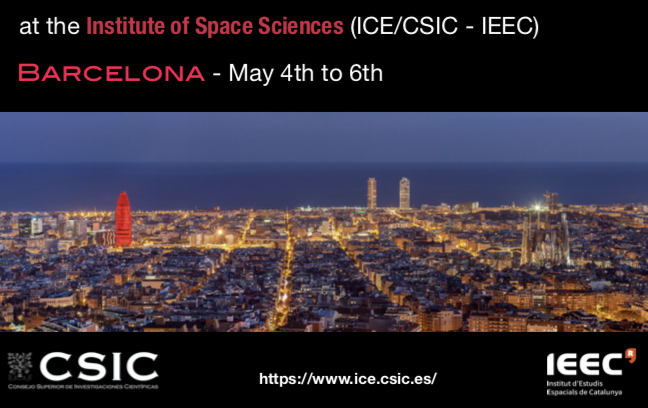Speaker
Description
Since the discovery of the accelerating expansion of the universe more than two decades ago, type Ia supernovae (SNe Ia) have been extensively used as standardizable candles in the optical. However, SNe Ia have shown to be more homogeneous in the near-infrared (NIR), where the effect of dust extinction is also attenuated. In this work, we explore the possibility of using a low number of NIR observations for accurate distance estimations, given their homogeneity at these wavelengths. We found that 1 epoch in J and/or H band, plus good gr-band coverage, gives an accurate estimation of Jmax and Hmax, and only introduces an additional scatter of ~0.04-0.05 mag for NIR epochs around optical peak. We also tested the effect of cadence and signal-to-noise in the estimation of \tmax and its uncertainty propagation to the NIR peak magnitudes, where we constrained the introduced scatter to <0.02 mag in Jmax and <0.01 in Hmax, considering in extreme cases. However, the effect of these are expected to be negligible, provided of data quality comparable to those usually obtained for observations of close-by SNe (z < 0.1). Following these results, we initiated the FLOWS project with the aim of using SNeIa with public ZTF optical light curves and few NIR epochs to map out the peculiar velocity field of the local universe. This will allow us to determine the distribution of dark matter in our own supercluster, Laniakea, and test the standard cosmological model by measuring the growth rate of structure parameterized by fD and H0.

